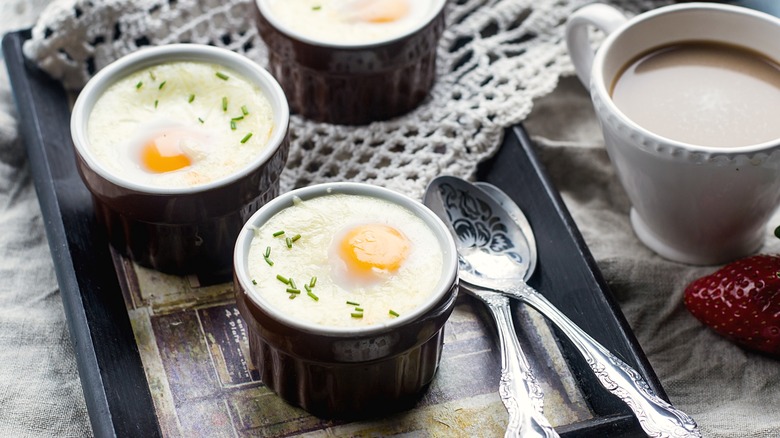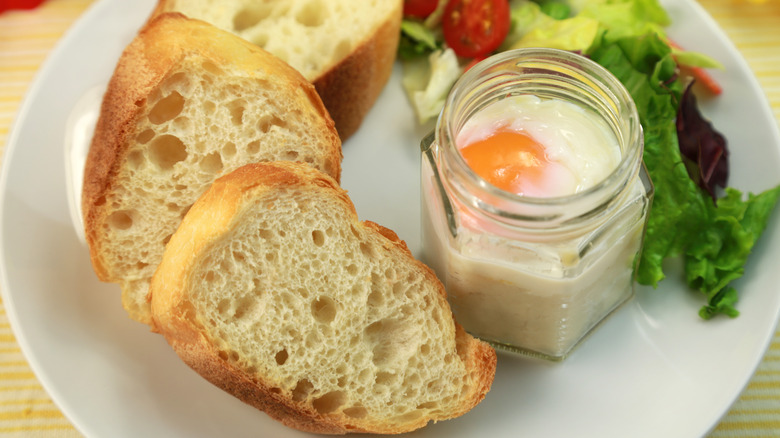The Main Difference Between A Shirred Egg And Coddled Egg
We may receive a commission on purchases made from links.
Of all the ingredients we have to work with, the egg is one of the most versatile. It's hard to believe that the same thing that makes a meringue cookie is also the base for your satisfying bacon, onion, and goat cheese quiche. But sometimes, you end up with two dishes that are so similar as to need a bit of explanation.
Both shirred and coddled eggs start with breaking eggs into a small dish or ramekin. The key difference is that shirred eggs are then baked in the oven, whereas coddled eggs are cooked on the stovetop in a water bath. Both result in a firm egg white but a delightfully runny yolk that's perfect for dipping toast. The other main difference is that coddling eggs can be considered a cooking technique for plain eggs, whereas shirred eggs are a dish unto themselves, traditionally made with the addition of heavy cream, herbs, and some cheese.
What is a shirred egg?
A shirred egg is sometimes referred to ask a baked egg, and it consists of one or more eggs baked in a flat-bottomed dish (known as a shirrer) with cream or milk. Though some assume the dish to be French or British, some of the earliest references to the dish describe it as an American egg style. The oldest recipes used simply butter, salt, and pepper, but the term quickly came to mean poaching eggs in milk or cream.
Topping the dish with herbs, grated cheese, or breadcrumbs will add both texture and flavor, but you can also use the dish as a blank canvas and add smoked salmon, bacon, or precooked vegetables for a more substantial dish. You might find the term used interchangeably with oeufs en cocotte, which is a very similar French dish, but they're not actually the same. The key difference is that oeufs en cocotte are always cooked in a water bath in the oven.
What is a coddled egg?
A coddled egg is much like a poached egg but without the need to get any of the technique right. By placing the egg into its own dish before putting it into the water, you won't have to worry about any whispy trails of egg white floating around the pan. Coddled eggs are designed to be served in their cooking dish, so you can also cook them on the runnier side without worrying about them falling apart. In fact, some chefs very lightly coddle eggs to create a creamier dressing for Caesar salad (and to avoid serving raw eggs).
While it's hard to pin down the date when people first began coddling eggs, it became such a popular way to cook in late 1800s England that specialized egg coddlers were the must-have for any dining table. These were small porcelain dishes, usually with lids that have become highly collectible, but you can get much the same effect with a ramekin or egg poacher (like this Cozilife silicone option) in a saucepan with a lid.
The basic recipe is just the egg with perhaps some salt to garnish, but just as with shirred eggs, you can turn coddled eggs into a full dish with many of the same ingredients. Cream, cheese, and ham are popular additions, but you can find all kinds of modern interpretations, like this crab coddled egg recipe.


